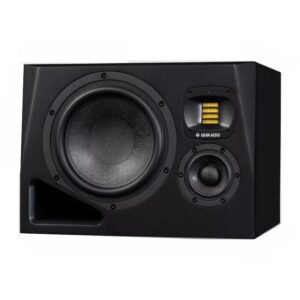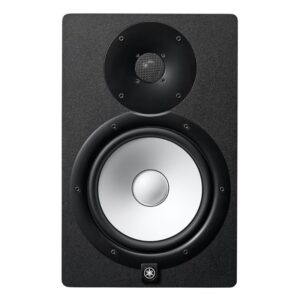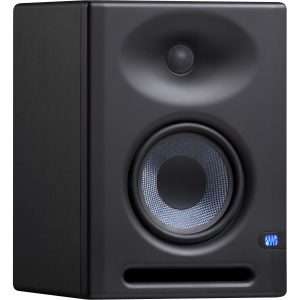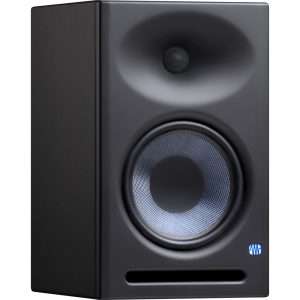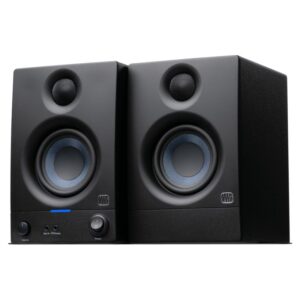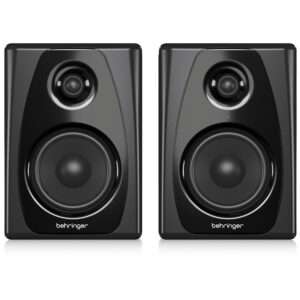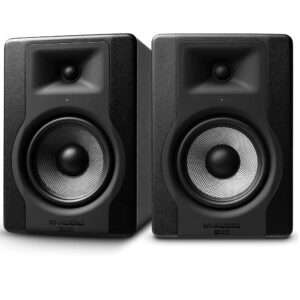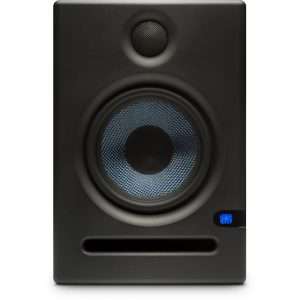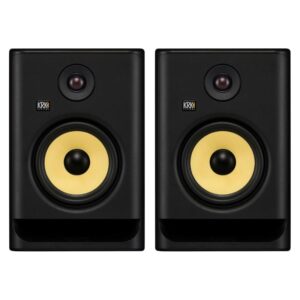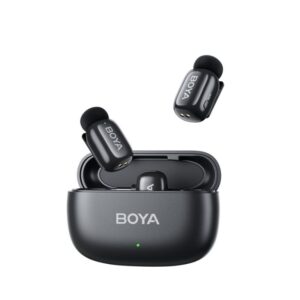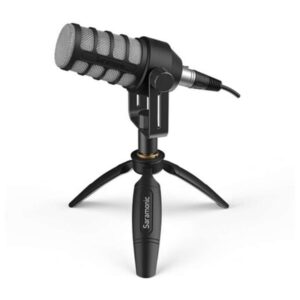Description
The Behringer NEKKST K5 is an active (powered) studio monitor that stands out due to its unique design collaboration: it was co-designed by Keith R. Klawitter, the renowned acoustic icon and founder of KRK Systems. This collaboration aimed to bring high-quality, accurate monitoring with a spacious sweet spot to a more accessible price point.
Key Features and Highlights:
- 5.25-inch Glass Fiber Cone Woofer: The K5 features a 5.25-inch long-throw woofer with a deformation-resistant glass fiber cone. This material, often associated with KRK monitors, is chosen for its rigidity and light weight, contributing to punchy, accurate bass response and clear, “smear-proof” mids.
- 1-inch Silk Dome Tweeter with Advanced Waveguide Technology: It’s equipped with a 1-inch ultra-high resolution silk dome tweeter. The key here is Keith Klawitter’s “Advanced Waveguide Technology,” which is designed to create ultimate acoustic dispersion and an extremely large “sweet zone”. This means you have more flexibility in your listening position without losing critical stereo imaging and detail.
- Bi-Amplified Class-D Design: The NEKKST K5 utilizes Class-D amplification, known for its high efficiency and power.
- Total Power: 150 Watts peak power, delivering 100 Watts RMS (effective continuous power) through separately powered drivers. This “true bi-amping” design (with two amplifiers per speaker) ensures absolute signal integrity, where each woofer and tweeter is driven independently, improving clarity and efficiency compared to passive crossovers.
- Rear-Ported Enclosure: The cabinet features a rear-firing bass port, which contributes to its extended low-frequency response. The enclosure itself is made from high-density composite material designed for ultra-low diffraction and reduced low-frequency distortion.
- Comprehensive Room Adjustment Controls: A strong point of the K5 is its versatility in adapting to various acoustic environments. On the rear panel, you’ll find:
- LF (Low Frequency) Shelf: Adjustable from 0 to -6 dB at 60 Hz (in 2 dB increments) to compensate for bass buildup.
- Low-Mid Notch/Peak: Adjustable from 0 to -6 dB at 300 Hz (in 2 dB increments). This is a unique control that allows fine-tuning in the crucial lower-midrange where room modes can often cause issues.
- HF (High Frequency) Notch/Peak: Adjustable from -4 to +2 dB at 8 kHz (in 2 dB increments). This helps tailor the high-end response to your room or preference.
- Input Trim: Variable input level control from -6 to +6 dB.
- Versatile Input Options: The NEKKST K5 offers standard professional and consumer inputs:
- Balanced XLR Input: For connecting to professional audio interfaces or mixers.
- 1/4″ TRS Balanced Input: Accepts both balanced and unbalanced 1/4″ signals.
- RCA Unbalanced Input: For connecting to consumer-grade audio equipment.
- Protection Circuitry: Includes independently controlled limiters for both the woofer and tweeter, protecting them against overload and distortion.
- Frequency Response: Offers a frequency response of 50 Hz to 20 kHz. For a 5.25-inch monitor, this is a solid range for most nearfield mixing tasks.
- Max SPL: Capable of a maximum sound pressure level of 100 dB SPL at 1 meter.
- “Planet Earth” Power Supply: Behringer’s switch-mode power supply designed for maximum flexibility (100-240V~), low noise, and superior transient response.
Who is the Behringer NEKKST K5 for?
- Home and Project Studio Owners: Excellent for those seeking accurate monitoring with a spacious sweet spot at a competitive price point.
- Music Producers and Engineers: Provides a reliable reference for mixing and mastering, benefiting from Keith Klawitter’s design expertise.
- Users Upgrading from Budget Monitors: Offers a noticeable step up in clarity, bass definition, and room adaptability.
- Anyone needing a monitor that can be fine-tuned to their room: The extensive EQ controls are a major advantage for imperfect acoustic environments.
Considerations:
- Rear-Ported Design: While the design is optimized, rear-ported monitors generally perform best with some distance from walls to avoid bass buildup and muddy sound.
- Brand Perception: While Behringer has made significant strides in quality, some audio professionals might still associate the brand with budget gear. However, the K5’s design collaboration with Keith Klawitter aimed to overcome this perception.
- Bass Depth (for 5.25″): While the K5 provides solid bass for its size, for genres with very heavy sub-bass content (e.g., electronic music, hip-hop), a dedicated subwoofer would still be beneficial for truly accurate low-end translation.










